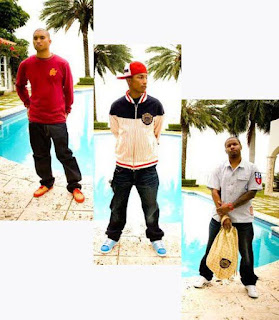Summer outfit:
One day, we’ll show off fits in real life again, even if it takes a little re-learning along the way. The Highsnobiety Summer Style Guide is here to help, ensuring that lightweight pieces still result in heavyweight looks.Hip-hop is both the voice of alienated, frustrated youth and a multibillion-dollar cultural industry packaged and marketed on a global scale. Hip-hop is also a multifaceted subculture that transcends many of the popular characterizations used to describe other music-led youth cultures. One of the important considerations about hip-hop is that since its conception in the early 1970s, hip-hop has arguably become more potent and efficient in galvanizing black social identity than the civil rights movement of the 1960s.
The evolution of hip-hop has developed from a self-conscious rumination of words and music to an obstinate expression of contemporary urban life through corporal gestures and apparel. From the beginning, hip-hop fashion has been on a trajectory of relentless flowering. Developments have been primarily in the men's wear sector; early clothes were functional and included conventional items-multicolored appliqué leather jackets, sheepskin coats, car coats, straight leg corduroy or denim jeans, hooded sweatshirts, athletic warm-up pants, mock turtlenecks, and sneakers and caps. Less functional items included designer jeans and moniker belts, gold jewelry, Kangol caps, Pumas with fat laces, basketball shoes, and oversized spectacles by Cazal.
Baggy apparel shapes that disguise the contours of the body were introduced in the 1980s. During the early 2000s, the archetypal hip-hop look consisted of baseball caps emblazoned with insignia from the Negro leagues and football teams and well-known fashion designers. Woolen beanie hats and bandannas were worn singularly or together. Goose down jackets or other foul-weather outerwear teamed with hooded sweatshirts. During the late 1990s the ubiquitous oversized white T-shirt, basketball vests, and hockey shirts became staples of the expression. Baggy denim jeans or camouflage cargo pants worn in a low-slung manner, backpacks, combat- or hiking-styled boots or sports shoes were complemented with tattoos and shaved, plaited, or dreadlocked hairstyles. Initially hip-hop women's wear consisted of inconsequential looks that reflected contemporary women's wear and were accompanied with items such as Gloria Vanderbilt jeans, bamboo earrings, Fendi and Louis Vuitton handbags, name chains, midriff tops, bra tops, short skirts, tight jeans, high boots, straight hair weaves and braids, tattoos, and false fingernails and oversized gold jewelry. In addition, some women wore apparel that consisted of items similar to those worn by men during the 1990s. Female rappers such as Lil' Kim and Foxy Brown displayed provocative apparel and outlandish sexual gesturing that would eventually become a raison d'être for hip-hop women's wear.
From within the postindustrial environment, hiphop has emerged as an articulation of an affirmative "otherness," which is at times unpopular and misunderstood by politically conservative and socially moralistic groups, and especially by those who regard the modernist, anti-pluralist perspective to be sacrosanct.
Consequently, hip-hop tends to be unpopular with establishment agencies who wish to censor the expression and supervise the conduct and morals of the young; however, hip-hop is understood by mass media agencies and is exploited as a symptom of the volatility between the pull of materialism and the stagnancy of the urban underclass. The precarious state of this condition forces hip-hop to become a project concerned with the mastery of urban survival, and therefore has a global appeal that is demonstrated in hip-hop from New Zealand, Japan, Africa, France, and Great Britain.
A centrifugal force, hip-hop has contributed to the conceptualization of an alternative perspective in the wider society; this includes materialism, manners, morals, gender politics, language, gesture, music, dance, art, and fashion. Hip-hop music and fashion have attained an essential position in culture, though they oscillate on the periphery of conformity and general acceptability, but because of the notion of outsider status, and building upon the popularity of rock music, hiphop has been admired and emulated by teenagers of most ethnicities and social classes.






No comments:
Post a Comment